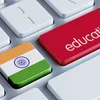How has COVID-19 set the path for hybrid teaching model in India
Before COVID-19, the traditional teaching method was the main mode to tutor children, which included more theoretical knowledge than practical analysis and observational learning.
According to the World Economic Forum, over 1.2 billion children in 186 countries were affected by school closures due to the COVID-19 pandemic. A study conducted by UNICEF found the closure of 1.5 million schools amidst a nationwide lockdown in India impacted 247 million children enrolled in elementary and secondary schools in 2020.
The global crisis has brought a tide of learning that marked the beginning of a new era. Making educators take a different path to mentor young learners and putting children at a place where they adapted to a contemporary approach to learning, the pandemic is making a significant impact and accelerating the edtech revolution.
Breaking conventional learning or fuelling it?
Before COVID-19, the traditional teaching method was the main mode to tutor children, which included more theoretical knowledge than practical analysis and observational learning.
Although the edtech platforms saw an ascent during the pandemic, the conventional approach did not evolve much with digitisation. The need of the hour has been pairing online learning with a contemporary approach to make the process interactive for children.
Indian education system to find a way out
The Indian education system is making amends and adapting to the new way of learning rather than letting the physical closures of campuses affect the process.
However, inefficient resources and people adapting to the technology at their own pace has been an obstacle along with connectivity and infrastructure challenges.
This is further leading to the unresolved concerns of teaching younger children and establishing effective education strategies in rural areas.
Young learners are losing out on their crucial foundational learning, which will further have an impact on their future. Owing to policies like NEP (National Education Policy) 2020 and encouraging to opt for a blended and hybrid model of teaching, both rural and urban sectors — private and government schools — will ensure quality education.
The government is also encouraging the hybrid learning process as it gears up to give a green signal to educational courses with up to 40 percent of blended content.
Matching the global standards with hybrid education
With the influx of information and access to content from across the globe available at a single click, the need to introduce a hybrid teaching has become crucial to the moment.
A true hybrid teaching model reflects equal importance to the delivery tool and the pedagogy. Keeping the same grounds of learning in considerations, some of the brands are stepping up responsibly and encouraging young learners to adapt to the new-day system, and hone their skills by gamification techniques.
As a result, it improves their problem-solving streak and boosts critical thinking at an early stage. The industry is growing by using a strong pedagogy on foundational numeracy and supporting the National Initiative for Proficiency in Reading with Understanding and Numeracy (NIPUN Bharat).
This ensures that every child in India necessarily attains foundational literacy and numeracy by the end of Class 3 by 2026-27.
With Indian and international edtech companies entering the didactic space, individual learning methodologies are paving the way to expose the benefits of a hybrid teaching model.
The methods have unique qualities and might not yield the result by replacing one with the other. However, combining them will support the student with the right education and skillsets to lead and be equipped to solve any challenge.
Pandemic has created the urgency of this teaching method, which otherwise would have taken a long time and deprived many learners of this learning experience.
Prioritising cost-efficient learning
The pandemic reintroduced us to our priorities, adapting to the changing environment and the technological capability to deliver education to any part of the country.
Today, most schools are building their online infrastructure, more affordable compared to building physical infrastructure. Due to the financial crunch, limited liquidity, and a long road of economic improvement, school owners are forced to think of optimum use of resources to reach and educate as many learners as possible.
The hybrid method will open gateways for innumerable opportunities to learn and grow tremendously. The new-age pedagogy is focusing the foundational learning around gamified and engaging content, activity-based education, student-led learning, innovative modules, and adaptive and personalised learning.
The COVID-19 outbreak has accelerated the need for new, engaging, and interactive methods, and going forward, India will take the next step with a “tribrid” model of — classroom, online, and experiential learning.
Edited by Suman Singh
(Disclaimer: The views and opinions expressed in this article are those of the author and do not necessarily reflect the views of YourStory.)








